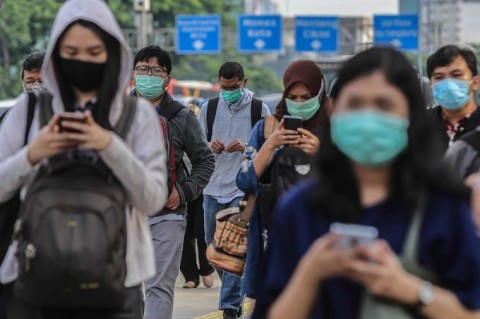Policies to tackle the spread of COVID-19 in Indonesia have affected various aspects of life. The implementation of large-scale social restrictions has the potential to trigger anxiety, depression, and stress in the community.
Other factors that can cause a person to experience anxiety disorder are environmental, emotional, and physical factors. Furthermore, the spread of false information (hoaxes) and conspiracy theories can also worsen the mental health conditions of the community.
Research that has been carried out in various countries reports that anxiety disorders cause psychological anomalies during the COVID-19 pandemic. The anxiety disorders experienced by individuals can reduce their immunity so they are susceptible to disease. This anxiety disorder can even make a person commit suicide. If it continues to be ignored, it can become a new problem for public health so it needs special attention.
The level of anxiety disorder in Indonesian society during pandemic
Research related to anxiety disorders in Indonesian society shows that there are four variables affecting the level of anxiety disorders in Indonesia during pandemic: age, gender, education and occupation.
The research was conducted using online questionnaires distribution to Indonesian public. The survey was conducted for eight days and received 8,031 respondents from all provinces in Indonesia.
From the results of this study, the respondents in 20-29 year age group are 4.33 times more likely to experience anxiety disorders and a higher level of anxiety disorders experienced by the 50 year age group. Meanwhile, respondents in the 40-49 age group were 2.32 times more likely to experience anxiety disorders at a higher level than those experienced by the 50 year age group.
These results suggest that older people are less likely to experience high levels of anxiety disorders. Older people have experienced many events in their life so that they can learn from past experiences and adapt to new situations.
In terms of gender, the results showed that men are less likely to experience moderate to high levels of anxiety disorders than women. In other words, men are able to cope with stressful situations better during the pandemic than women.
By education, respondents with secondary education were 3.117 times more likely to experience anxiety disorders at a higher level than respondents with a higher education. Highly educated people can access correct information so that they can calm themselves down. Moreover, they can also be more careful in making decisions by considering various perspectives.
Then, the results of research related to occupation found that respondents who work in the private sector experience high levels of anxiety disorders. Meanwhile, respondents who work as civil servants such as the military and police mostly experience low to moderate levels of anxiety disorders.
The results also stated that respondents who work as farmers, fishermen, or labors have a higher probability of experiencing moderate anxiety disorders than housewives. This group of workers also experiences anxiety disorders at a higher level than other groups.
One of causes is the job characteristics of farmers, fishermen, and labors that are contrary to health protocols such as wearing masks, maintaining physical distance, and avoiding crowds. The work cannot be limited because they have to work in order to meet the needs of their family.
In contrast to these groups (farmers, fishermen and labors), other occupational groups can be modified based on existing regulations. For example, private employees who can work from home by changing the details of their tasks. Public services can also undergo some adjustments to fit health protocols, allowing people not to be present when they need services.
The research was conducted by distributing online questionnaires to the public. Data collection was carried out for eight days and resulted in 8,031 respondents. Each question on the questionnaire uses Likert scale. In the final stage, a multivariation test was done using multinomial logistic regression.
Author: Hario Megatsari
Source
Megatsari, H. et al., 2020. The community psychosocial burden during the COVID-19 pandemic in Indonesia. Heliyon, Volume 6, pp. 1-5.





